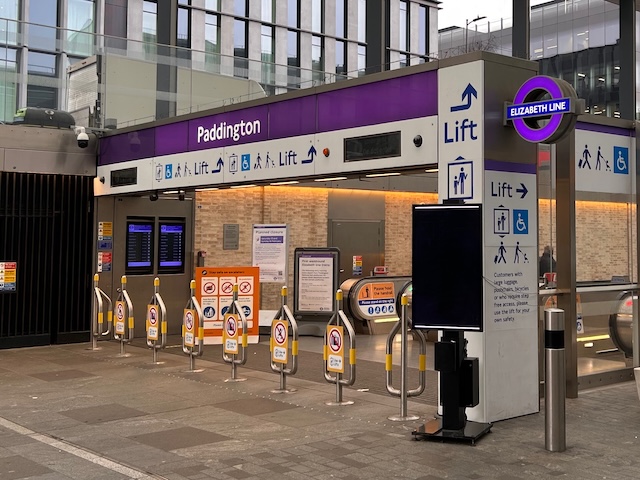Warning signs interest me. In some instances warning signs are necessary and appropriate, but in my experience they are often the mitigation measure of last resort for an issue that probably could have been solved by a different conceptual design.
Take this example, one of the entrances to the Elizabeth Line at Paddington Station, London.

In this image I count six different classes of sign directing people to the lifts with their luggage. And, what’s more, in addition to all the signs you can see, there is an additional innovation. The black TV screen is connected to a camera that scans for passengers who are towing suitcases towards the escalators. Guilty parties spotted, it displays an image of their suitcase along with an arrow pointing to the lift.
In addition to the signs there are physical barriers to suitcases, which must not be working otherwise the signs would not be necessary.
As I recall, when the station opened, there were no barriers and hardly any signs. All of these measures are therefore an attempt to solve a problem that has emerged since the station has opened.
Clearly the station managers are dealing with a real, operational safety challenge. And with limited options for re-design of the physical infrastructure, they are using the levers available to them: signs, barriers and sophisticated surveillance. This isn’t a criticism of station managers – rather a provocation for conceptual designers in the built environment:
How often do we use signs and barriers to fix problems that better design could prevent?
